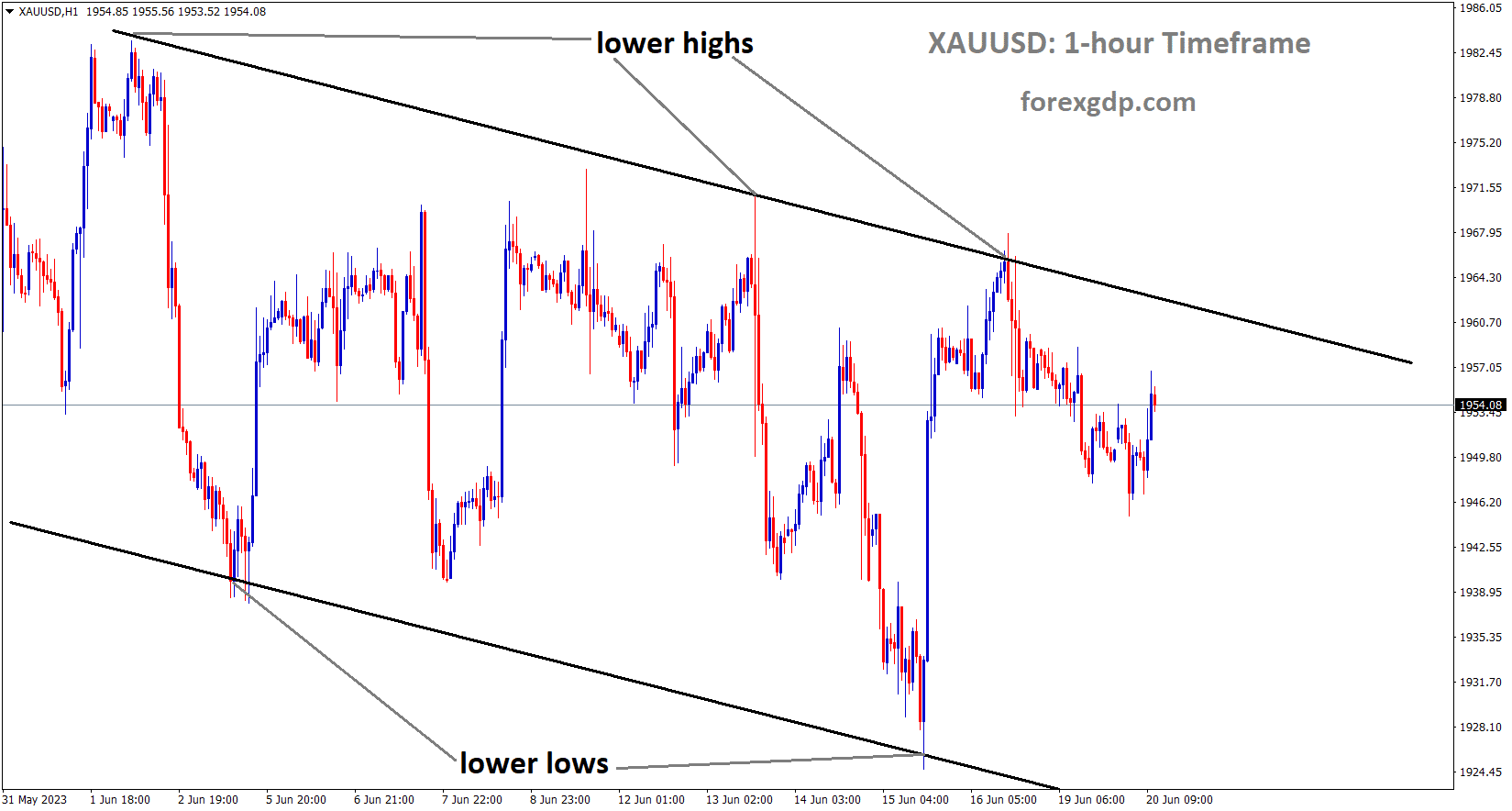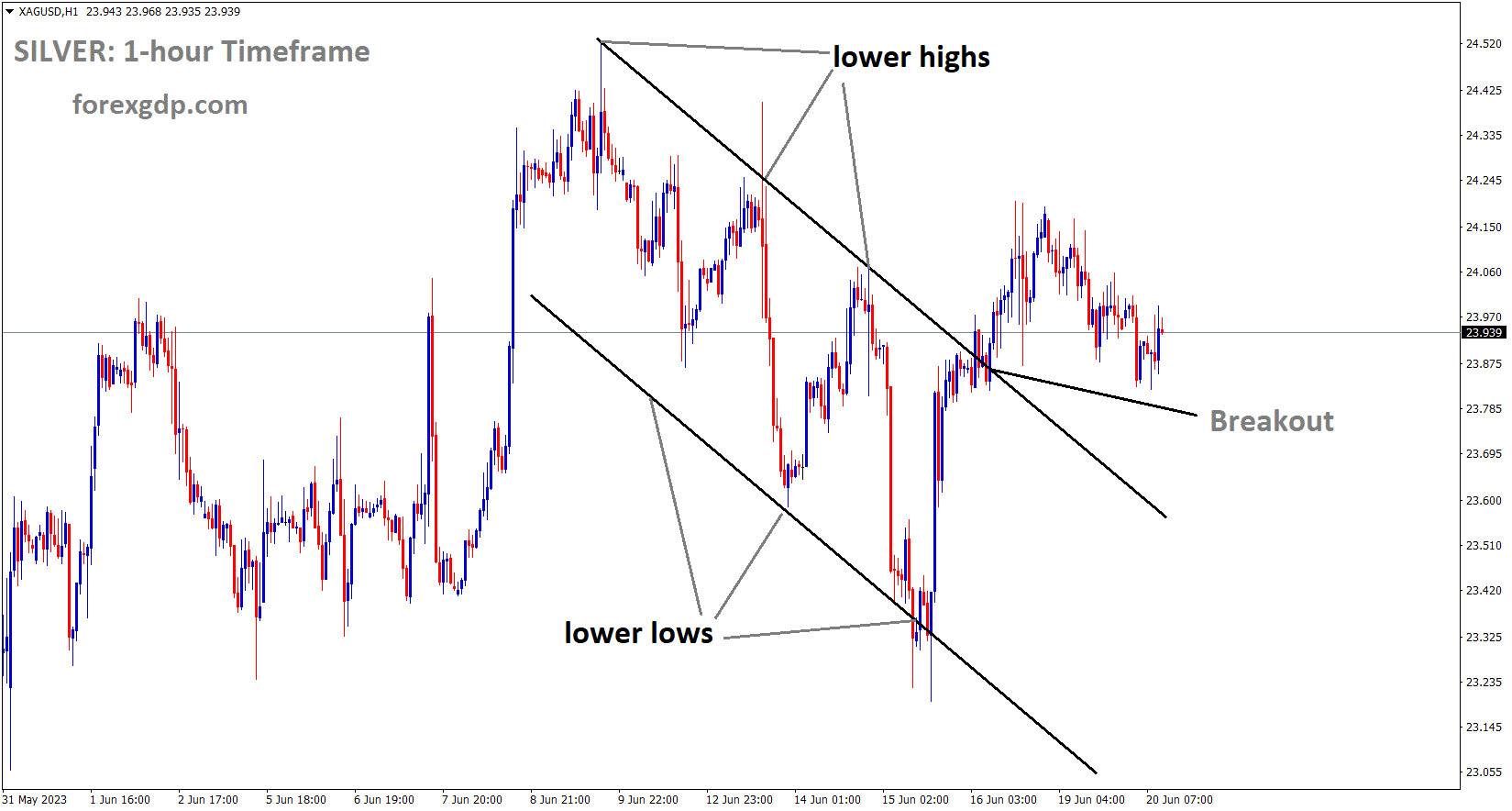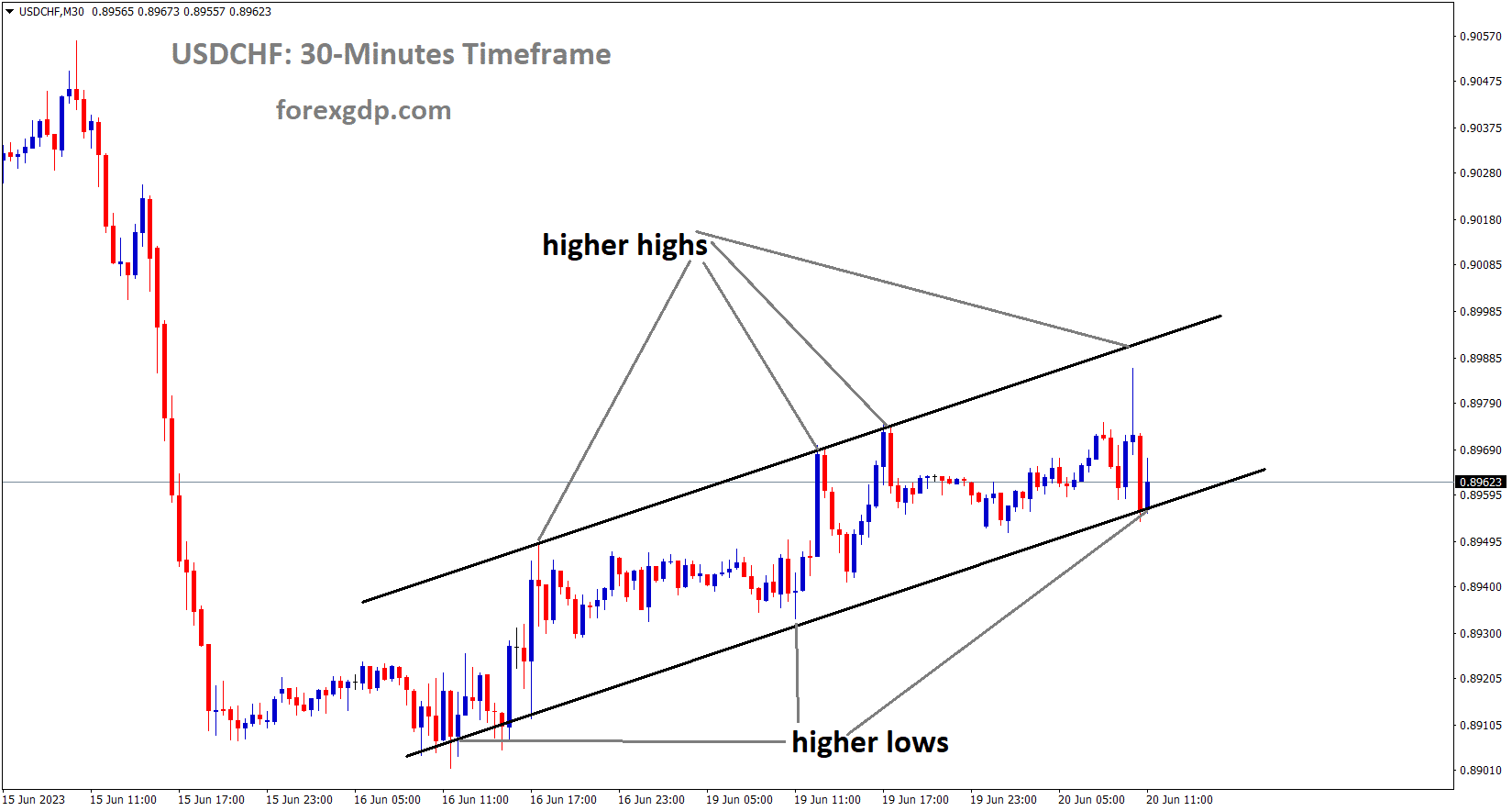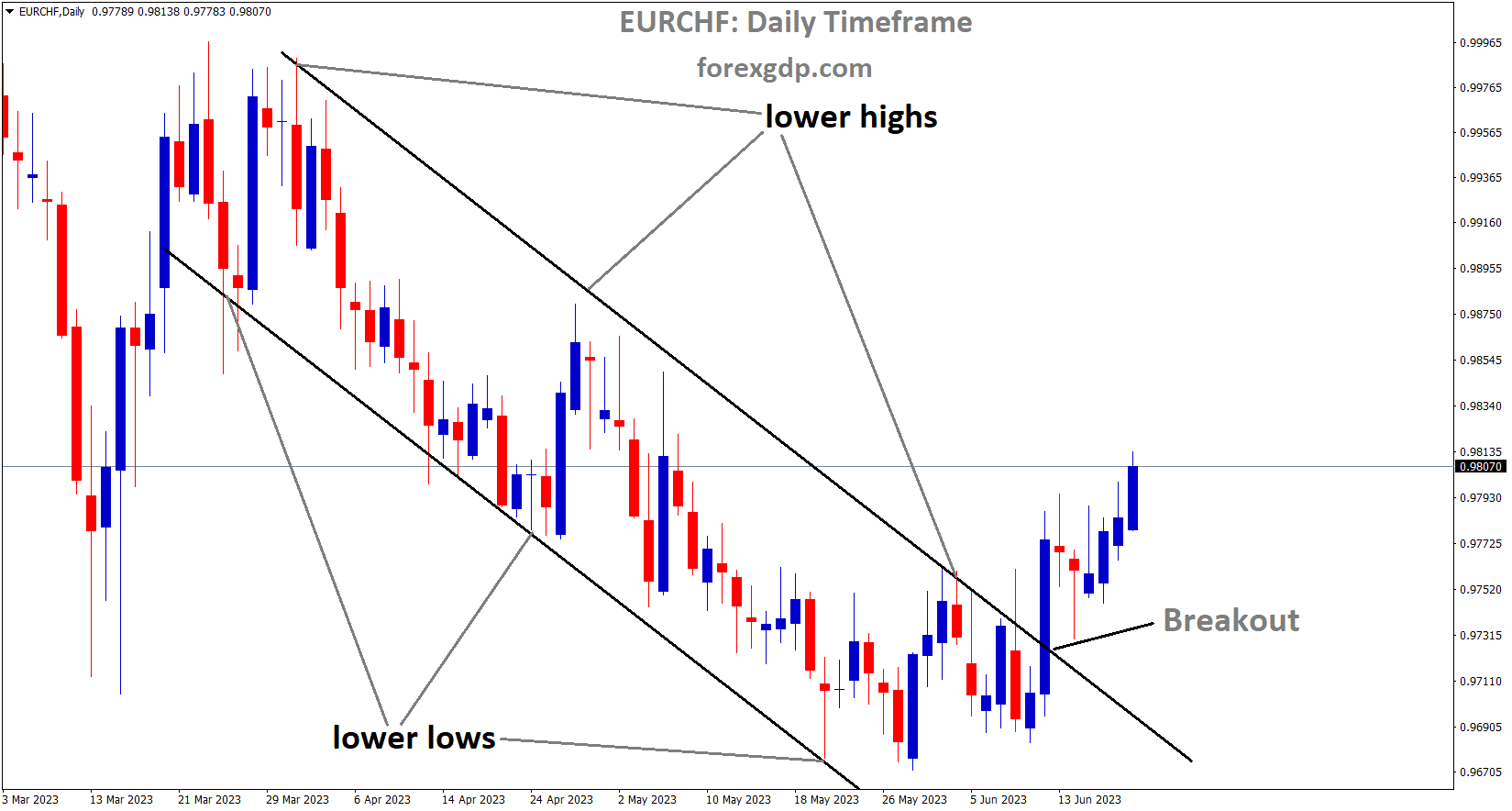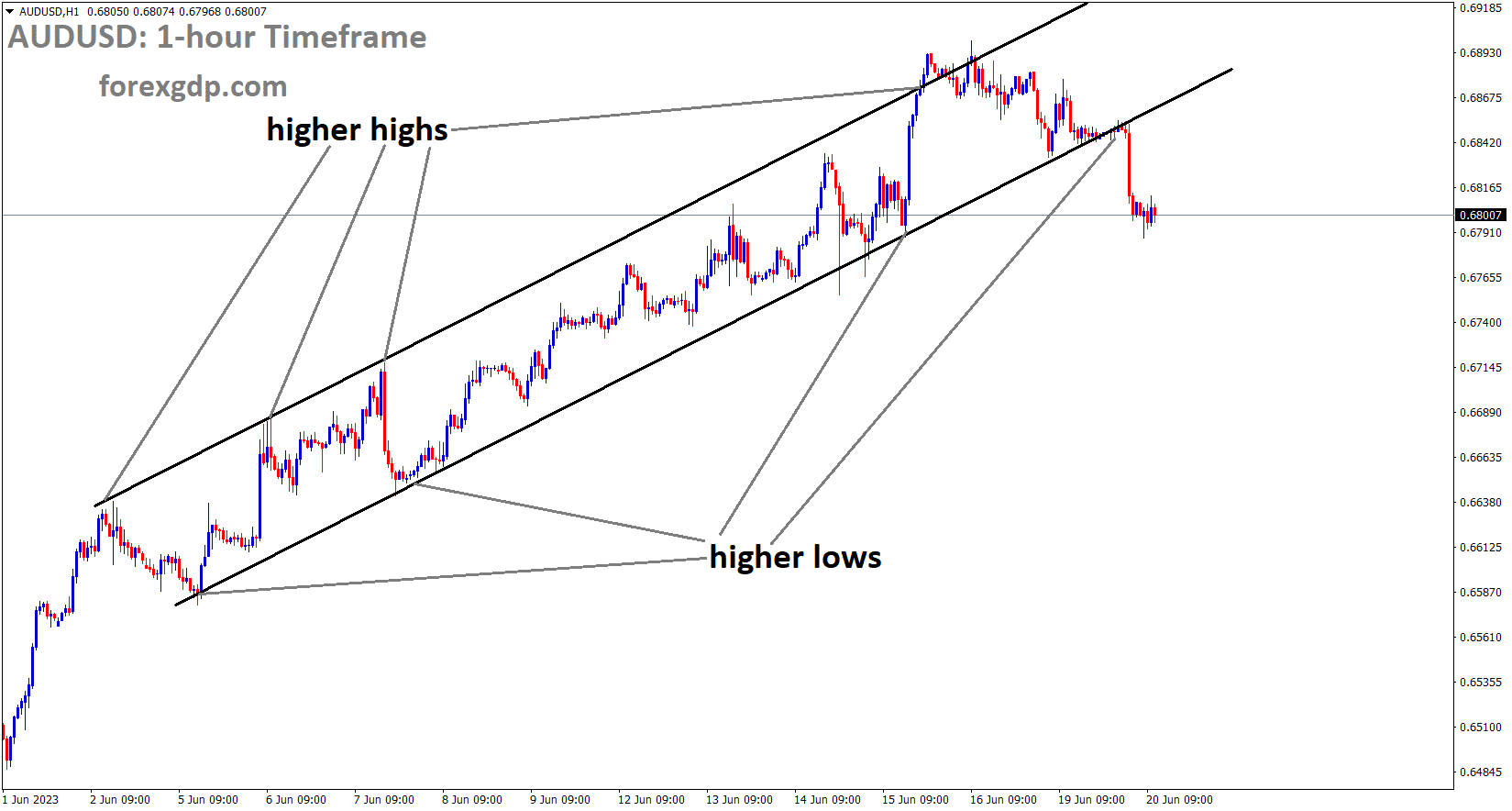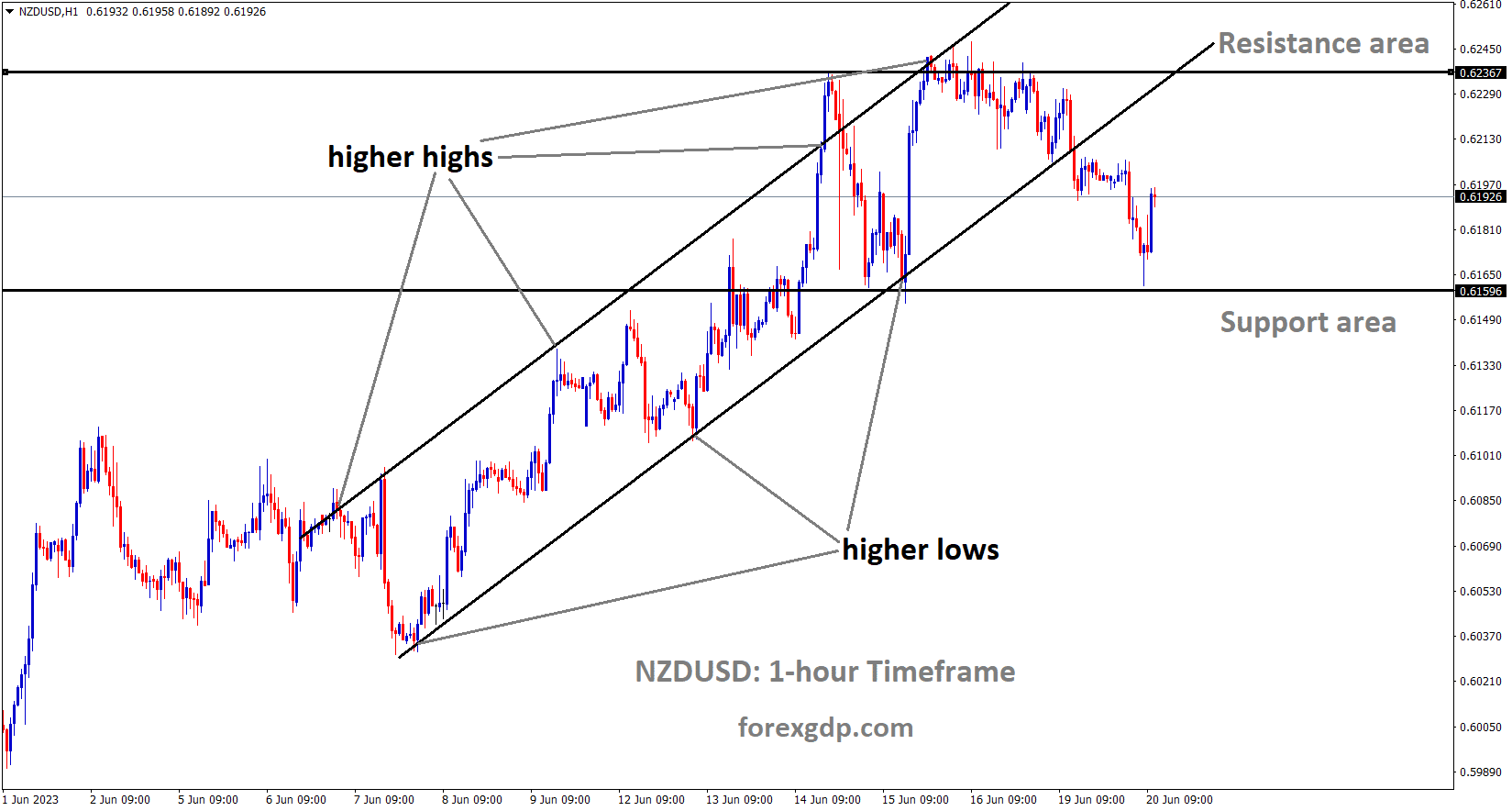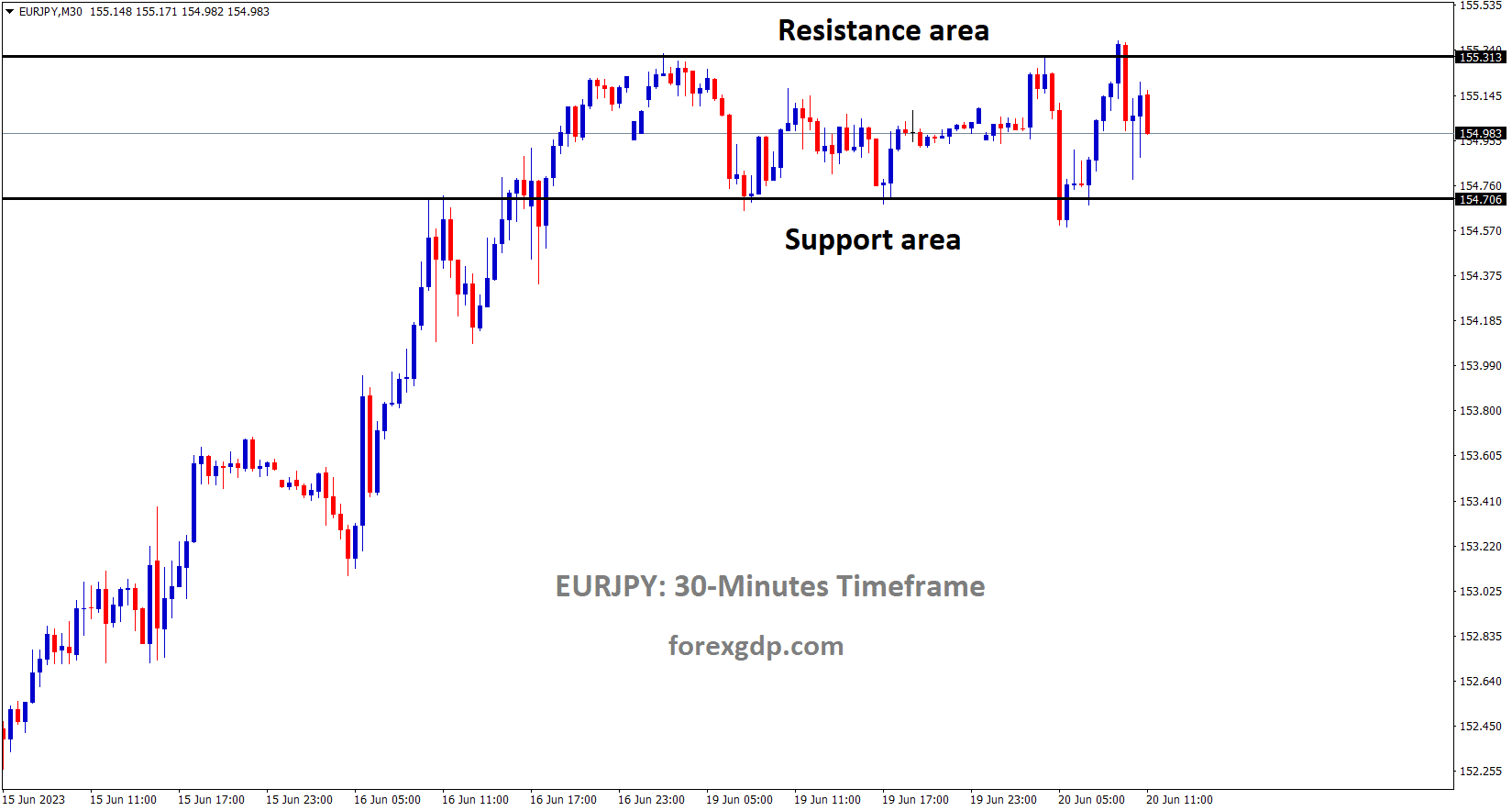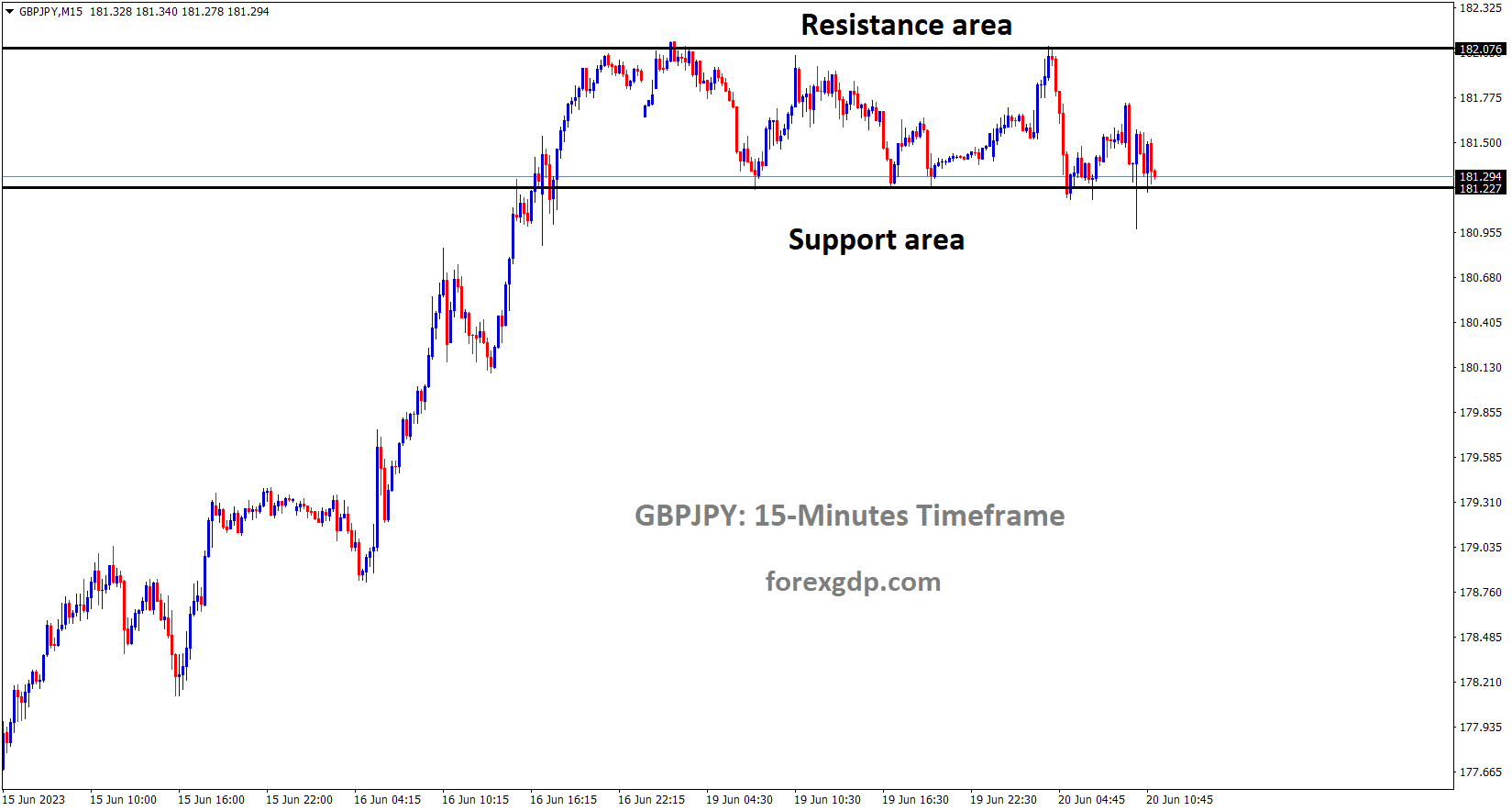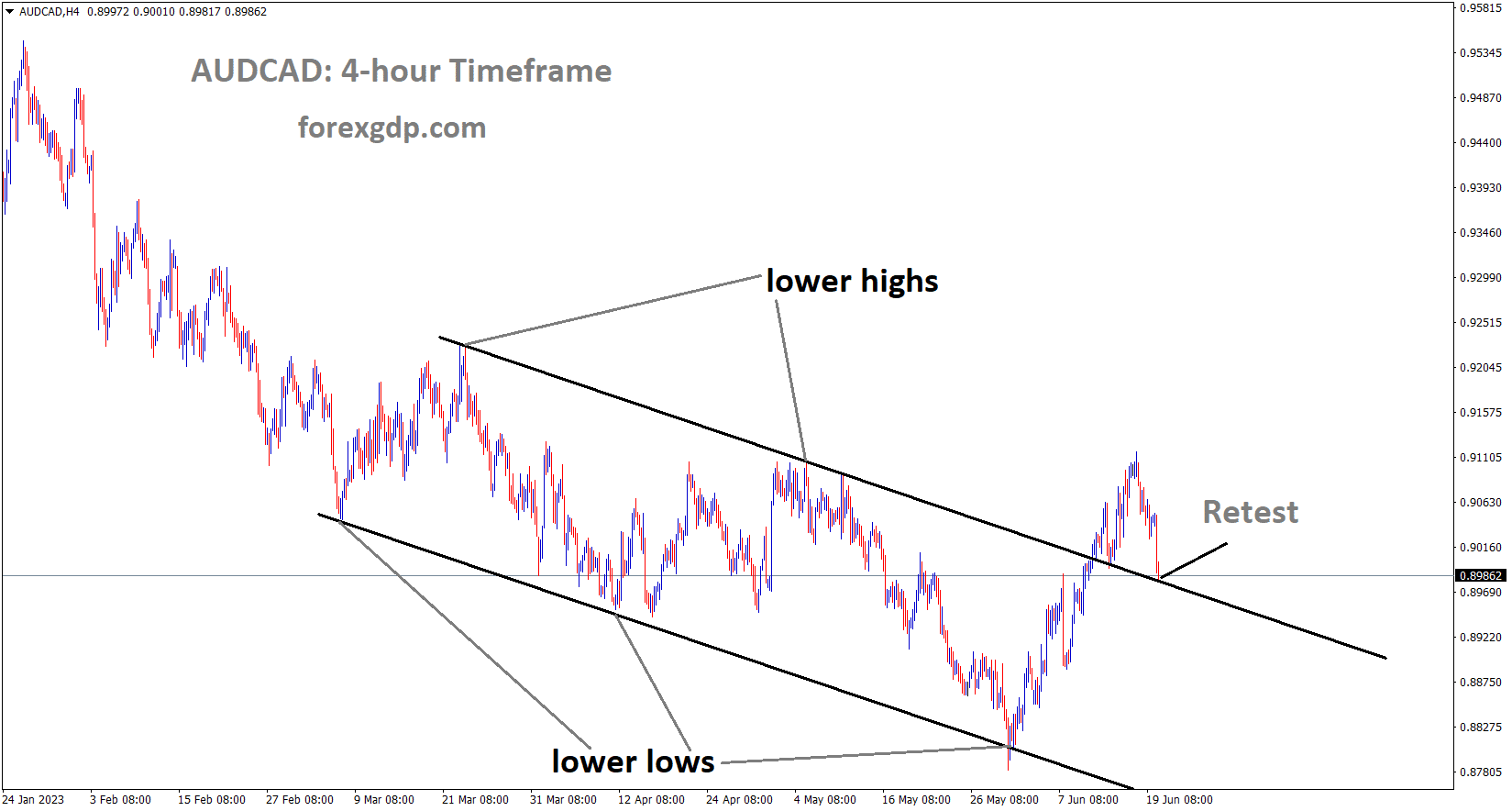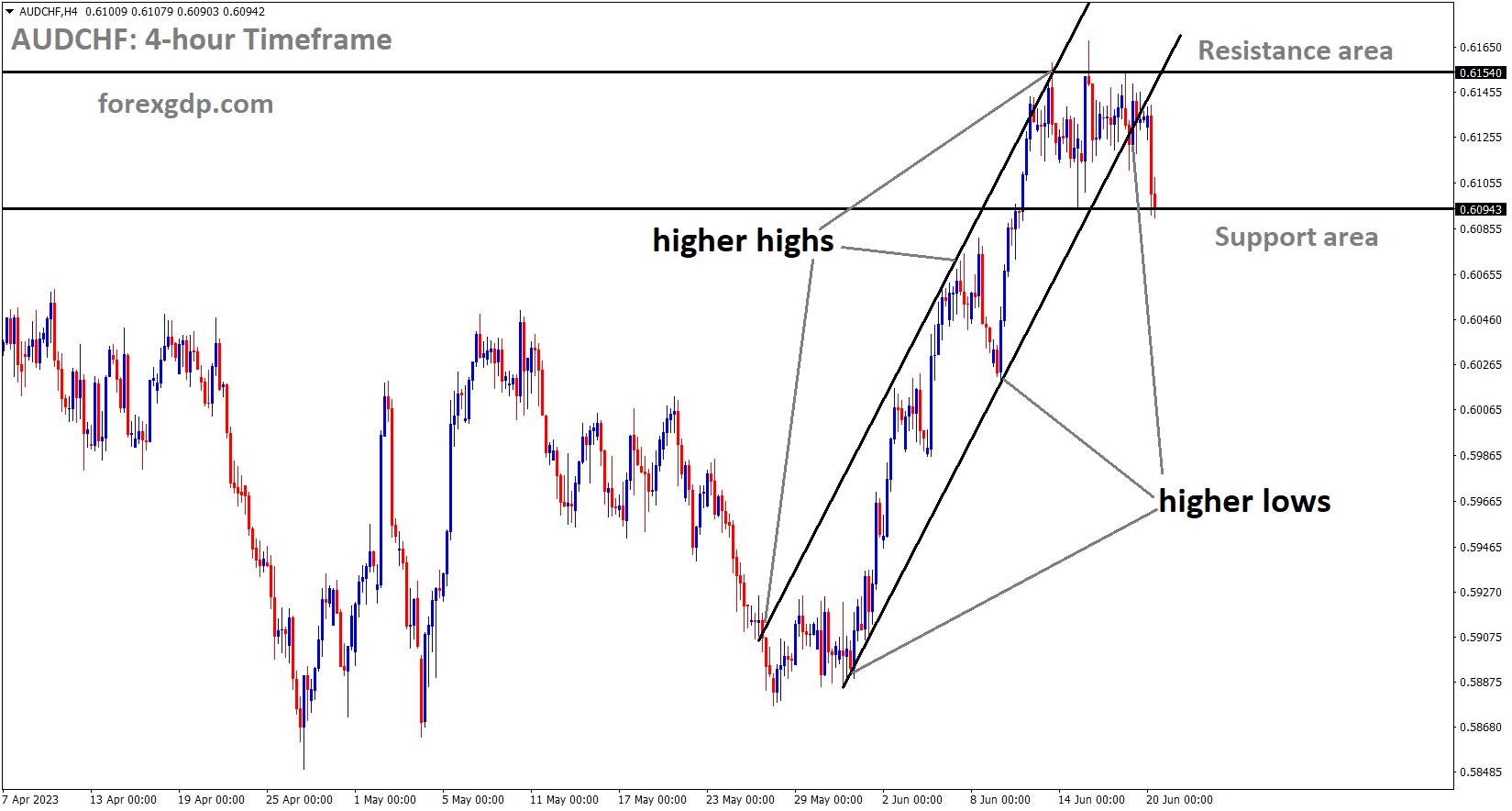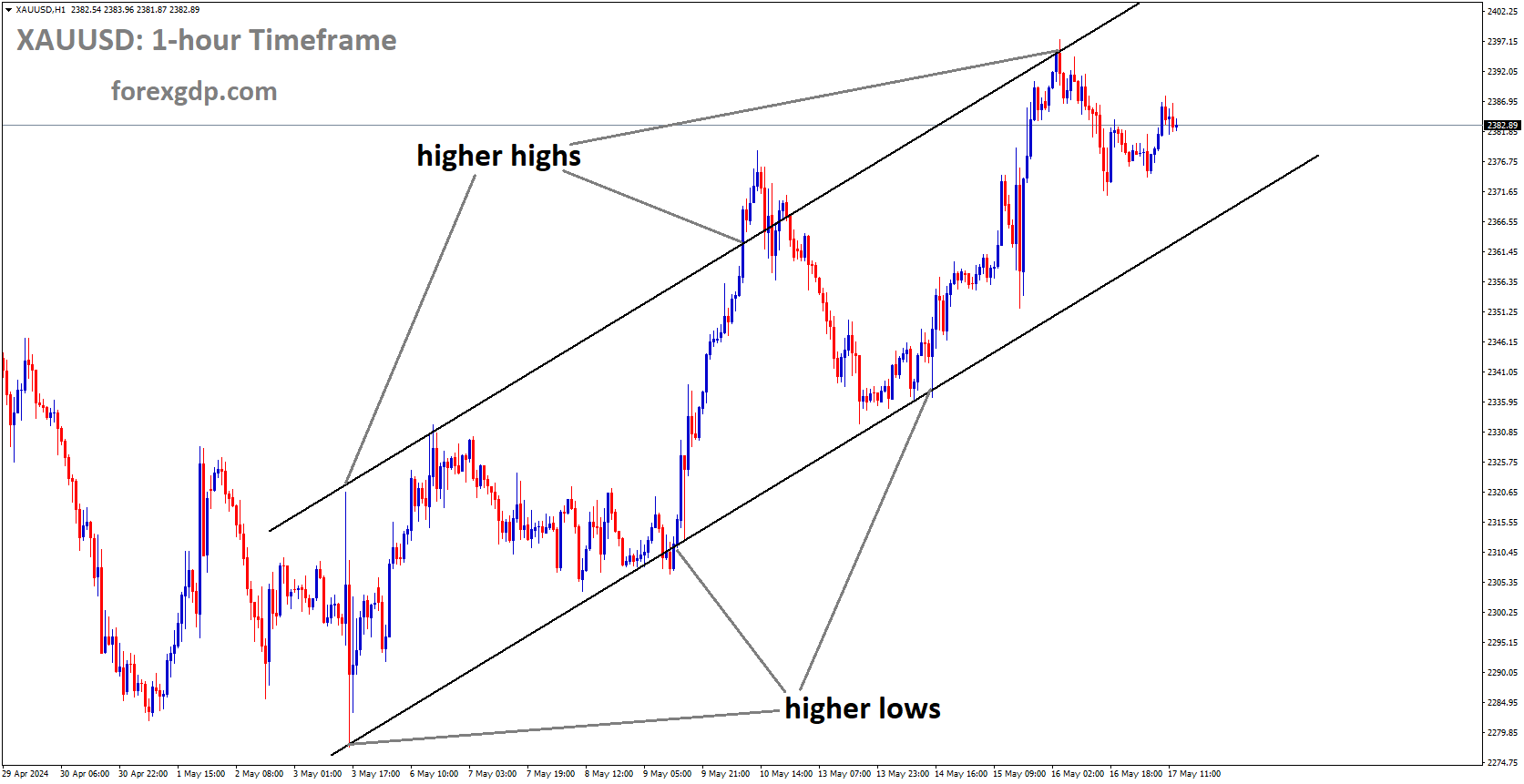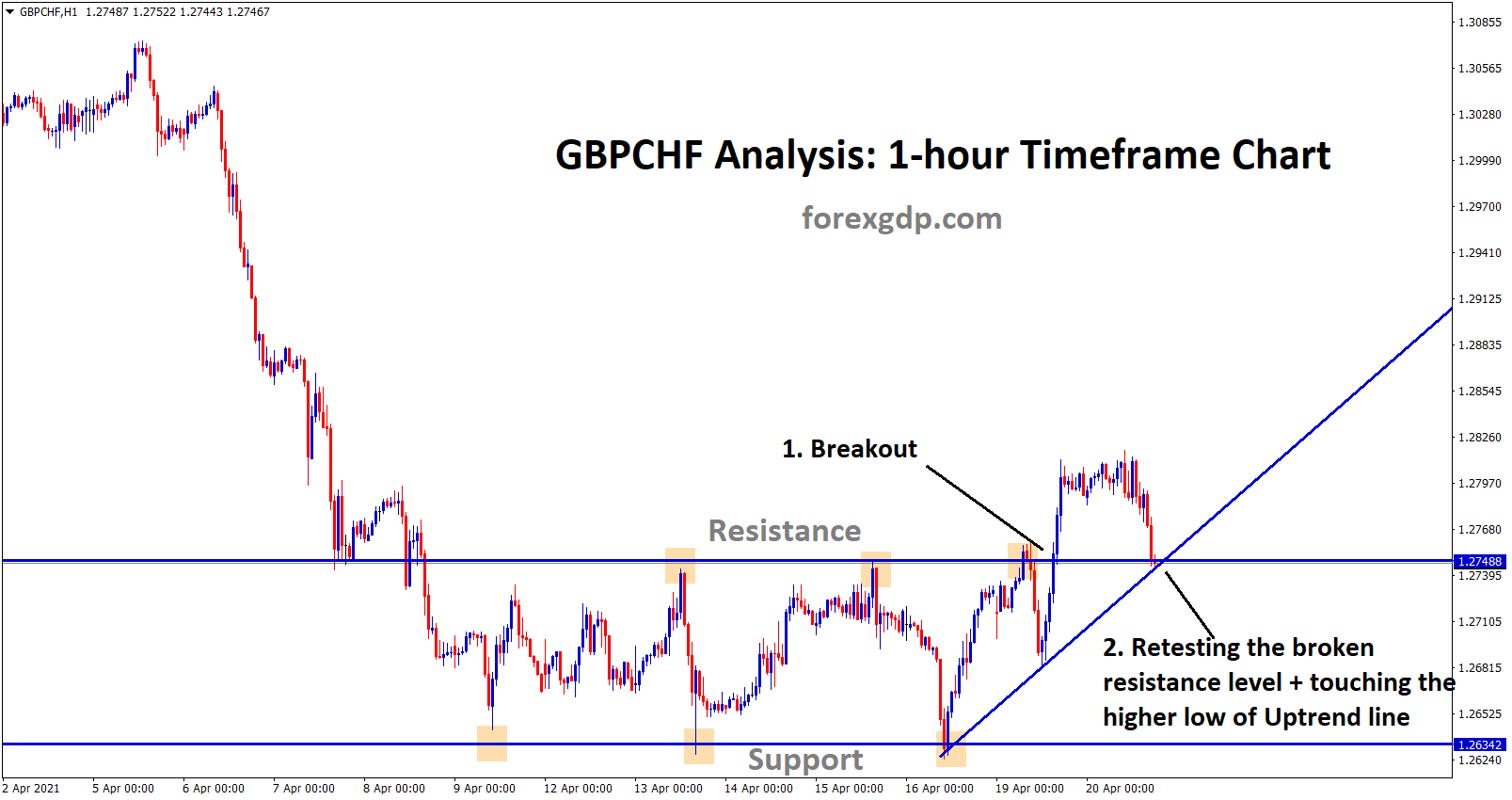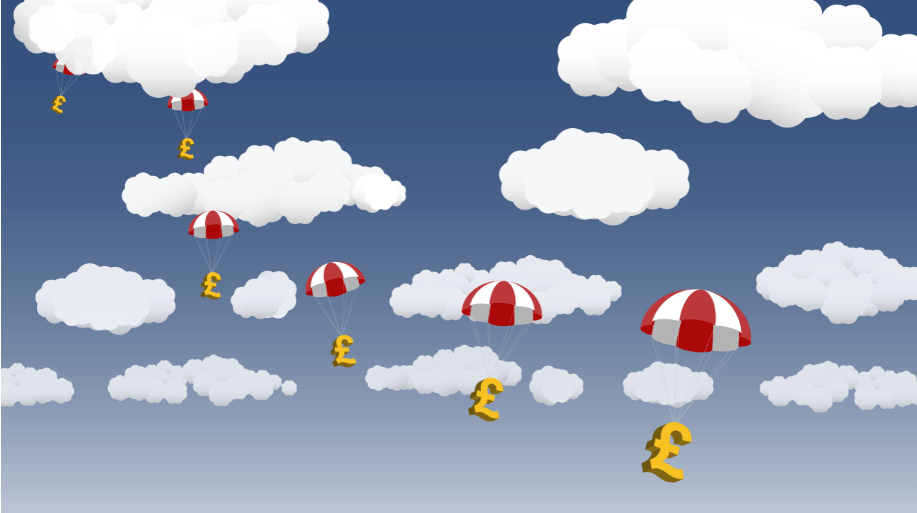GOLD Analysis
XAUUSD Gold Price is moving in an Ascending channel and the market has fallen from the lower high area of the channel.
After successful diplomatic negotiations between the US and China, gold prices are down. US Foreign Minister Qin and US Secretary of State Anthony Blinken met in Beijing during the last weekend. China also communicates stable, predictable, and productive maintenance with the US on Taiwan Matters, while the US expresses its diplomacy and ties with China.
In a slow trading session caused by a US holiday, gold prices show just slight declines. This week saw three major central banks issue monetary policy decisions, and European stocks have since traded badly. According to the dot-plot in the Summary of Economic Projections, the Federal Reserve (Fed) left interest rates steady but predicted that they would peak at 5.6%. The Fed has signalled that it is likely to raise interest rates at its meeting in July since then, but the recent surge in US stocks suggests that investors are not buying a more aggressive Fed. Due to the holiday weekend in the United States, XAUUSD trading is being driven by the yield performance of last Friday’s session. The benchmark 10-year note rate is currently 3.767%, but real rates in the United States are 1.547% which is still lower than the 1.719% peak reached in 2023. Because higher yields on US bonds normally signify a stronger US Dollar, the XAUUSD exchange rate is likely to stay under pressure as long as US bond yields remain elevated.
SILVER Analysis
XAGUSD Silver Price has broken the Descending channel in upside.
The US Dollar Index, which tracks the greenback’s value relative to a basket of other currencies, rises by 0.13 percent, to 102.436. Over the weekend, US Secretary of State Anthony Blinken met with his Chinese counterpart, Foreign Minister Qin, in Beijing to begin discussions between the two countries. While inviting Qin to Washington, Blinken emphasised the value of diplomacy and open communication with China. Qin said that China will retain its position on Taiwan while working towards a stable, predictable, and productive relationship with the United States. Concerning information from the United States, the National Association of Home Builders Housing Market Index rose from 50 to 55 in June, exceeding expectations and marking the highest reading since July 2022. The unexpected increase was attributed to high demand and low supply, both of which were highlighted in the report.
USDCHF Analysis
USDCHF is moving in an Ascending channel and the market has reached the higher low area of the channel.
This week’s SNB meeting will add 25 bps to the 50 bps rate hike implemented at the last SNB meeting. Compared to the 1.1% and 1.5% growth forecast by the government, economists expect the Swiss economy to expand by 0.80% this year and 1.3% in 2024, respectively. The Swiss government has predicted an inflation rate of 2.3% for the year, but economists expect it to be closer to 2.4%.
Economists polled by Reuters predict that the Swiss National Bank will raise interest rates by 25 basis points on June 22, despite market expectations for a larger hike. The larger risk is that rates may peak higher than they anticipate. SNB Chairman Thomas Jordan has lately reiterated his preparedness to raise rates, encouraging investors to expect a 50 basis point hike on Thursday despite an easing in inflation, which is currently the lowest among G10 economies at 2.2%. Nonetheless, 30 out of 33 economists polled between June 15 and 19 predicted that the SNB will increase its key policy rate by 25 basis points to 1.75 percent, down from the 50 basis point increase it gave in March. Four times a year, the central bank meets to set policy, although only three economists predicted a repeat of March’s action. After this month’s action, most analysts (23 out of 33) predicted the SNB would remain on hold for the remainder of the year. According to BofA’s head of Europe macroeconomic research, Ruben Segura-Cayuela, the Swiss National Bank is likely to raise rates by 25 basis points in June, with a risk for a 50 bp increase. We expected the SNB to actively deploy its balance sheet to aid with the tightening of conditions, which is why we didn’t choose for a stronger hiking cycle on pace with other central banks. In their previous announcement, they made it clear that this was helping to reduce imported inflation.
EURCHF Analysis
EURCHF has broken the Descending channel in upside.
The Swiss National Bank has abandoned its decades-long effort to limit the value of the Swiss franc and has instead interfered in currency markets to support the currency, so assisting in the containment of inflation over the past year. Since its meeting in March, the franc has gained roughly 2.5% against the euro, making it one of the best performing G10 currencies. Nonetheless, the European Central Bank’s hawkish tone after a widely-anticipated 25 basis point rise last week and pricing for at least one more ECB raise before the SNB’s upcoming meeting in September fueled market expectations of a greater move. Chairman Jordan and Vice Chairman Martin Schlegel have voiced alarm over persistent inflation and expensive rents in a series of recent interviews. According to the available evidence, the SNB should moderate its rate increases to 25 basis points.But the SNB has been sounding hawkish in recent communications, therefore we expect a 50bp raise to 2%, according to Capital Economics’ Europe economist, Adrian Prettejohn. Although the Swiss government forecast inflation of 2.3% for the year, market expectations were for an average of 2.4%, which raises the possibility of higher interest rates. The rate was predicted to peak at 1.75 percent by 23 of 33 economists, although 10 predicted a higher final rate. Seventeen out of twenty respondents identified an increase in the terminal rate as the greater risk, rather than a decrease. The market expects the terminal rate to peak at 2.25 percent by the end of the year, and prices in that possibility at around 50 percent. Growth in the Swiss economy is expected to slow to 0.8% this year and 1.3% in 2024 from the government’s original projections of 1.1% and 1.5%, respectively.
AUDUSD Analysis
AUDUSD is moving in an Ascending channel and the market has reached the higher low area of the channel.
The Reserve Bank of Australia has decided to increase interest rates again in the near future in response to expected increases in inflation.
When interest rates are raised in an effort to dampen domestic demand and bring down consumer prices, and only then, does the inflation rate begin to ease. The board has been keeping an eye on family budgets and the strain that can put on them.
NZDUSD Analysis
NZDUSD is moving in an Ascending channel and the market has rebounded from the support area of the minor box pattern under the channel.
The New Zealand Treasury is worried that the RBNZ’s planned rate hike to 5.50% will trigger a further decline in domestic demand and drive consumers to spend less money on goods. The interest rate in New Zealand is 5.50%, which is higher than in the United States. The New Zealand economy is showing signs of entering a recession, with Q1 GDP contracting by 0.10% and Q4 2022 GDP contracting by 0.70%, the latter of which is the threshold at which a recession is officially declared.
As investors anticipate that the Federal Reserve won’t lower interest rates this year, the NZDUSD pair is falling approaching the significant support level of 0.6150. The Kiwi asset is collapsing like a house of cards as the New Zealand government frets about the cascading impact of Reserve Bank of New Zealand interest rate increases. Significant losses have been produced in Asia by S&P500 futures. Due to the long weekend and the fact that US markets were closed on Monday, unpredictable behaviour is predicted. The general market atmosphere is one of caution, which has decreased interest in risky assets. The US Dollar Index has slowly risen to just over 102.60. Jerome Powell, the chairman of the Federal Reserve, stated that two interest rate hikes are forthcoming and that this year is not the time for rate decreases. The consensus on the street is that the Fed will announce only one more interest rate hike this year despite inflationary pressures being twice the desired rate of 2%. This is because the outlook for the UK economy is bleak.
The New Zealand economy has already entered a technical recession in the meanwhile. Gross Domestic Product fell by 0.1% in Q1 after falling by 0.7% in the previous quarter. The RBNZ’s higher interest rates have drawn criticism from the NZ Treasury because their excessively tight monetary policy has stifled domestic demand. Investors should be aware that the rate of interest set by RBNZ Governor Adrian Orr, which is higher than the rate in the US economy, is 5.50%.
EURJPY Analysis
EURJPY is moving in the Box pattern and the market has fallen from the resistance area of the pattern.
Lower Japan’s currency has no meaning, according to Japanese Finance Minister Shunuchi Suzuki. The United States recently removed the yen from its list of currencies to be monitored. The United States Treasury reports that none of the countries under surveillance have boosted the currency weightage owing to export advantage. Only one of three criteria on the monitoring list is satisfied in Japan.
GBPJPY Analysis
GBPJPY is moving in the Box pattern and the market has reached the support area of the pattern.
Finance Minister Shunichi Suzuki said on Tuesday that Japan’s currency policy would not alter immediately after the United States withdrew the country from its surveillance list, stressing that the decision was coordinated with Washington. Concerning monetary policy, Suzuki assured the press that Japan will maintain open lines of communication with the United States and other countries. Just because Japan was crossed off the list doesn’t guarantee we’ll act any differently than we did before, or even have any effect at all.
AUDCAD Analysis
AUDCAD has broken the Descending channel and the market now retesting the broken area of the channel.
Decelerating ascent Oil consumption worldwide may suffer as a result of rising Chinese demand. The People’s Bank of China lowered interest rates last week to promote oil imports and boost productivity. This week, the Canadian dollar was largely affected by events in the United States.The US dollar against the Canadian dollar continues its gradual rebound from its lowest level since September 2022, making Tuesday the second consecutive day of advances. Spot prices have been trading in a narrow range of 1.3225-1.3230, up 0.15% on the day, during the Asian session. Concerns that a worldwide economic slowdown, especially in China, may affect fuel demand have kept the price of crude oil at historically low levels. The weakening of the Loonie and its link to commodities prices provides support for the US dollar against its Canadian counterpart. It’s important to keep in mind that China’s recent macro data demonstrated the country’s economy is failing to maintain the growth seen earlier this year. The market remains unsettled despite news that China is planning a large stimulus package to enhance economic support and the expected decision by the People’s Bank of China to reduce one-year and five-year Loan Prime Rates. The USDCAD pair is supported by a rise in the safe-haven USD and a rise in US Treasury bond yields as investors become less confident in the global economy.
Despite not raising rates last week, the Federal Reserve indicated that borrowing prices may still need to climb by as much as 50 basis points before the end of the year. US bond rates rose sharply as a result, with the markets pricing in a further 25 basis point hike at the FOMC’s meeting in July. However, concerns about the Fed’s ability to continue raising rates were prompted by weaker-than-expected data from the United States. Fed Chair Jerome Powell’s testimony before Congress on Wednesday and Thursday is now the centre of attention as investors look for new information on the trajectory of future rate hikes. In turn, this will be a major factor in deciding the short-term path of the USD and providing significant momentum for the USDCAD exchange rate. Meanwhile, the dynamics of the oil price should provide opportunities for short-term trading around the main.
AUDCHF Analysis
AUDCHF is moving in an Ascending channel and the market has reached the support area of the minor Box pattern under the channel.
At the AI Conference meeting, RBA Deputy Governor Michelle Bullock remarked that while rising demand and pay rise are not good for the economy, the migration of a workforce scarcity is desirable on the one hand. Inflationary price increases discourage consumers from making purchases, hence the RBA regularly raises interest rates to slow the rate of inflation. Weaker consumer spending and wage growth will ease inflation, giving policymakers pause before continuing to raise interest rates. During Tuesday’s AI Group conference in Newcastle, Deputy Governor of the Reserve Bank of Australia Michele Bullock gave a lecture and is currently fielding questions from the crowd. Migrants from other countries have helped alleviate labour shortages. Migration increases demand, but it’s not the whole answer. Consumption of products, services, and human labour must be reduced. The RBA can only control inflation by raising interest rates. It is crucial that the government not contribute to demand, and that wage growth not occur too quickly. Without being bloody minded about rising interest rates, policy is not on a predetermined course.
Don’t trade all the time, trade forex only at the confirmed trade setups.
Get Live Free Signals now: forexgdp.com/forex-signals/

